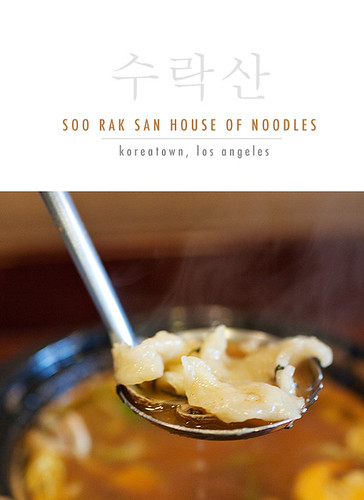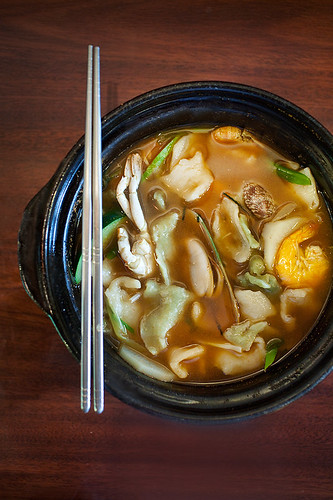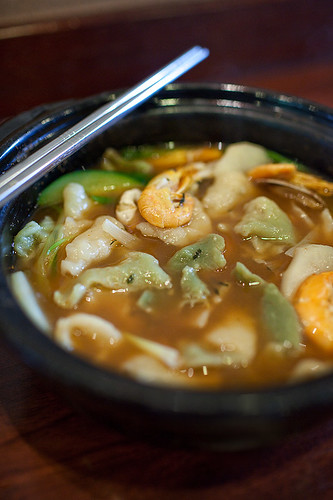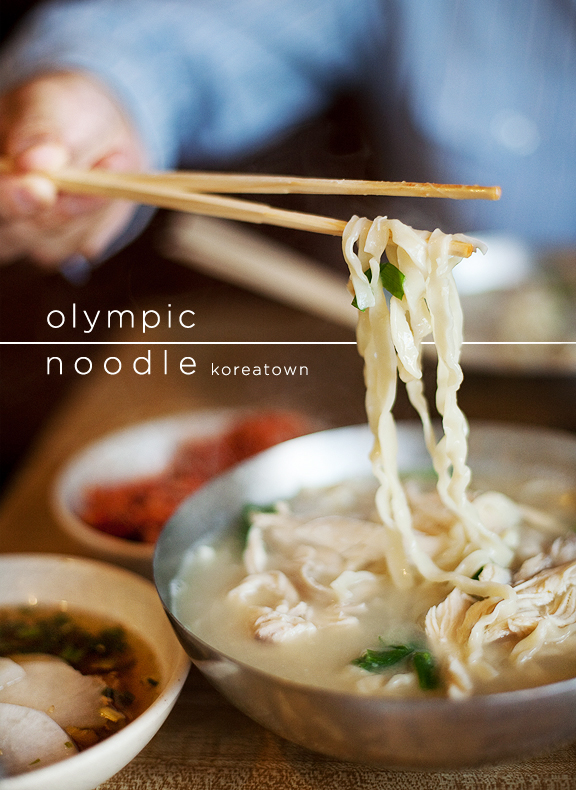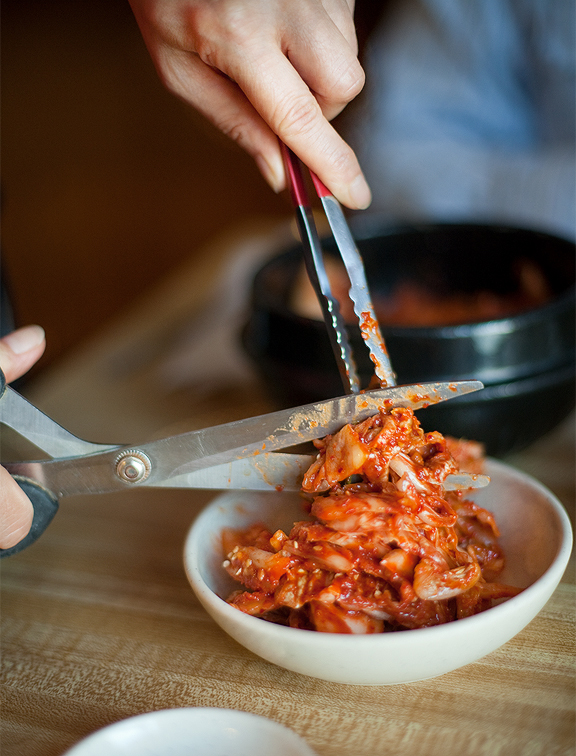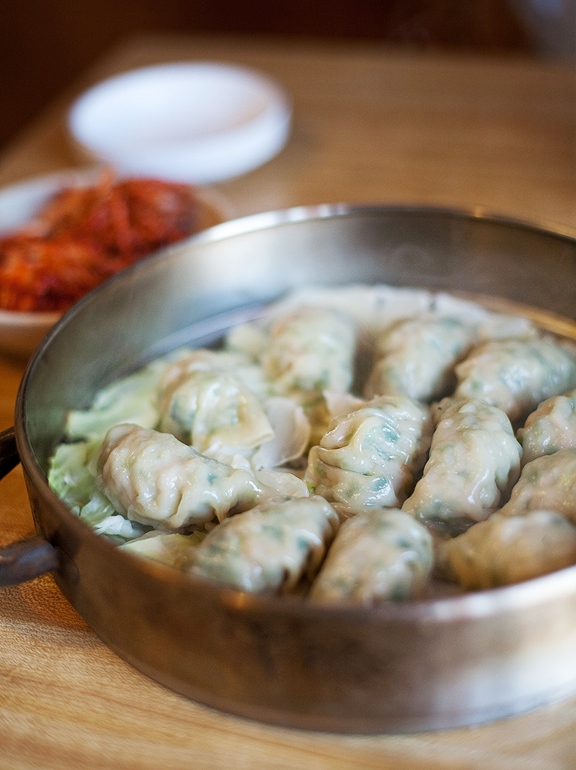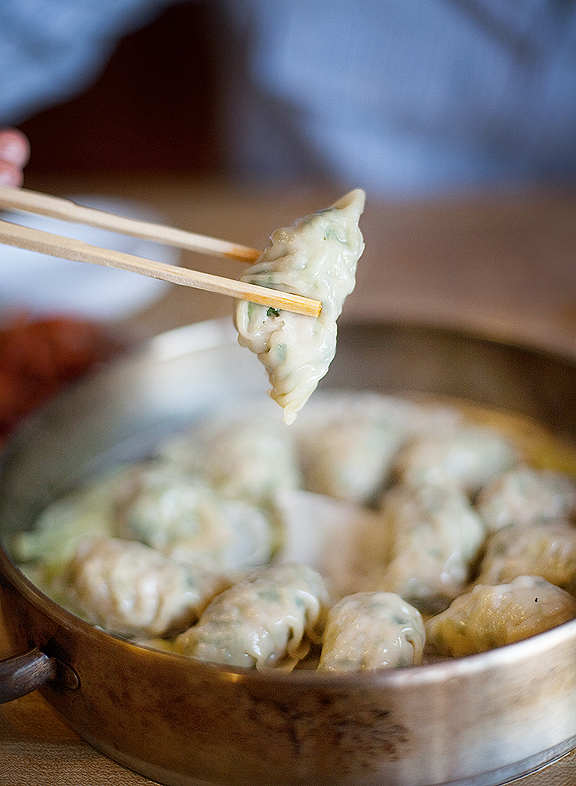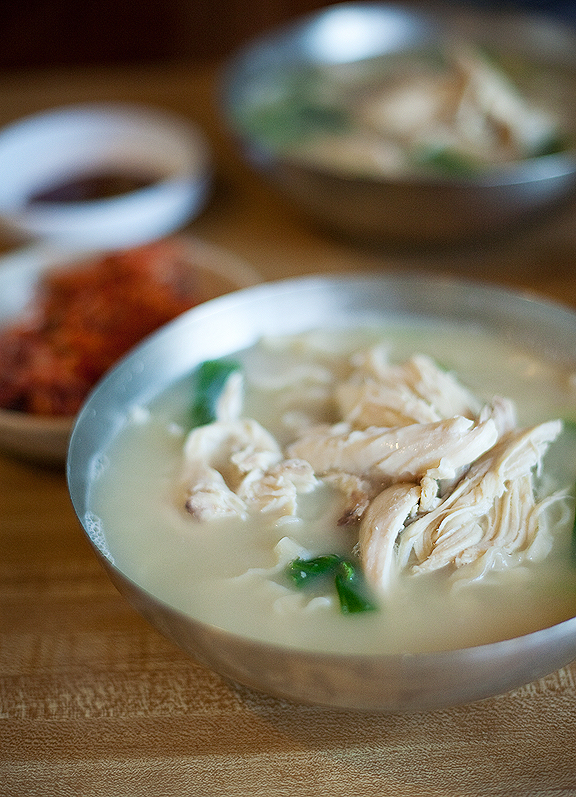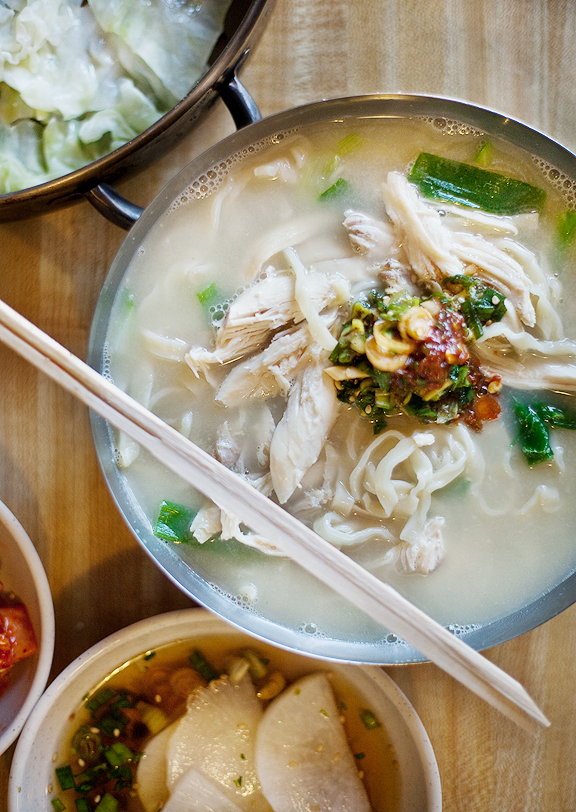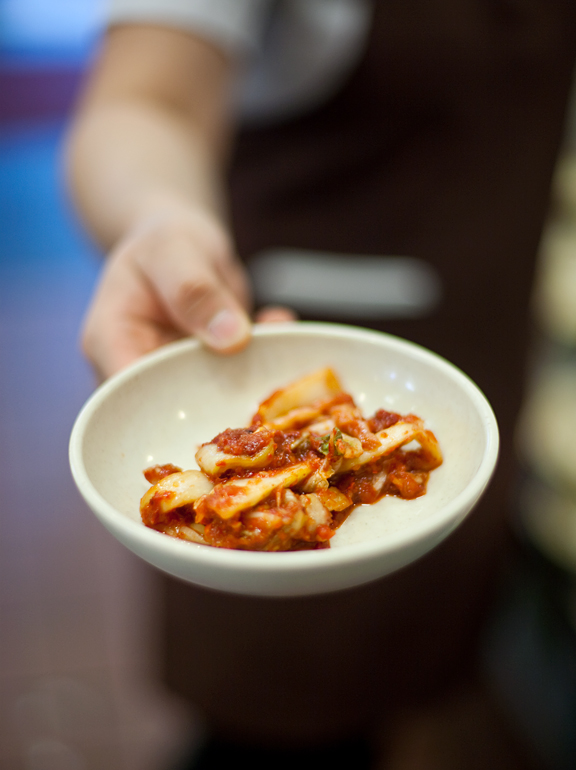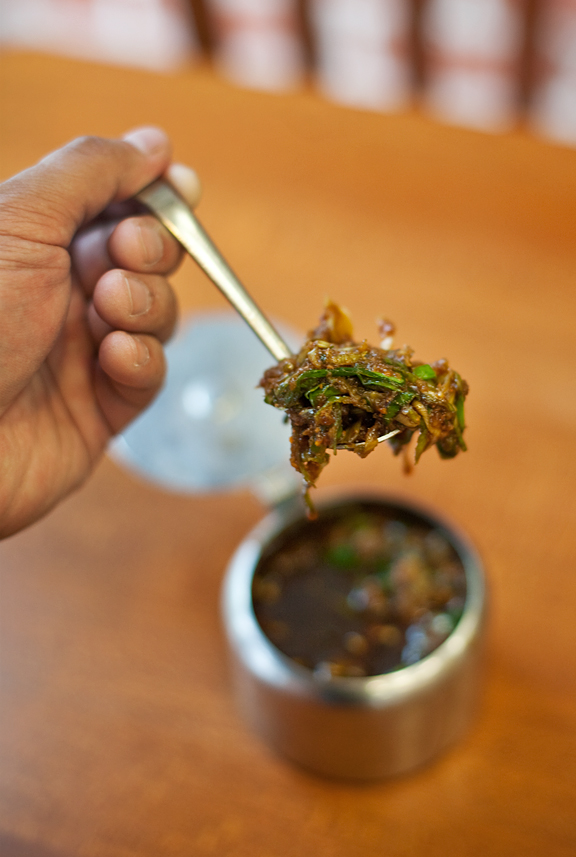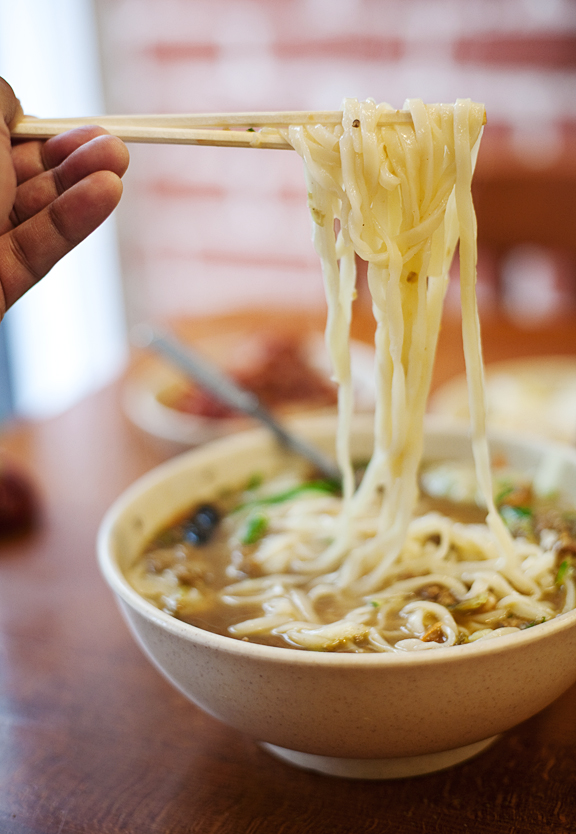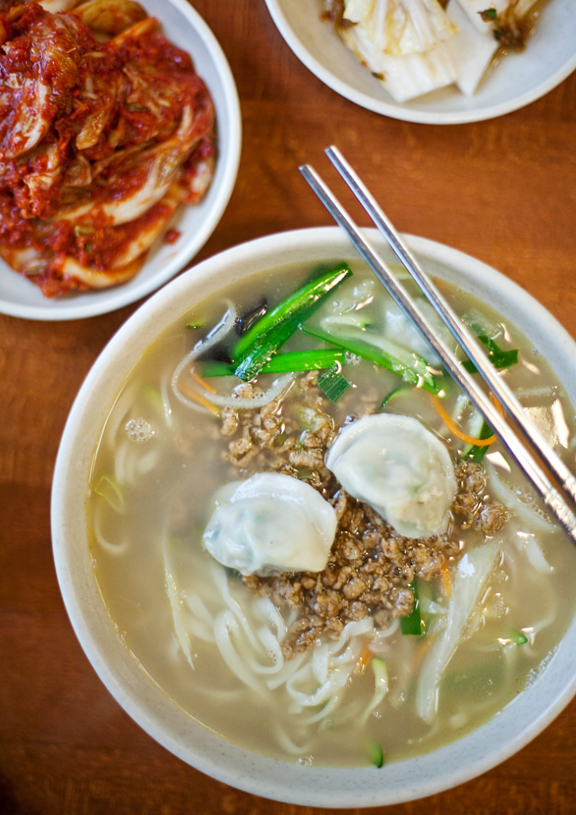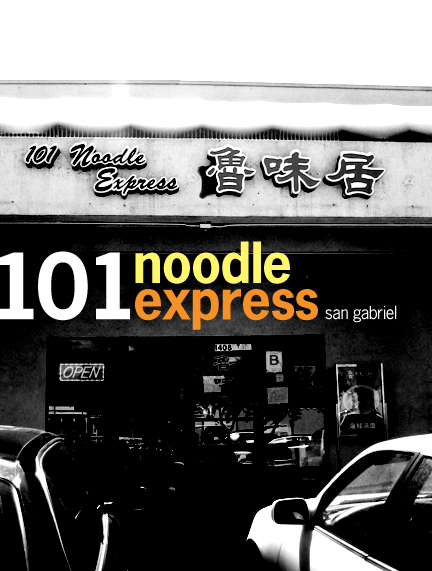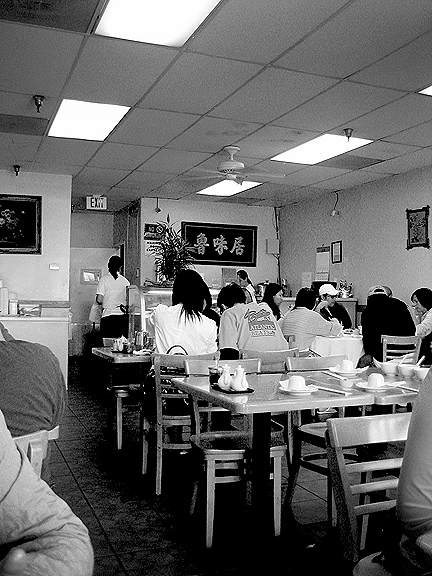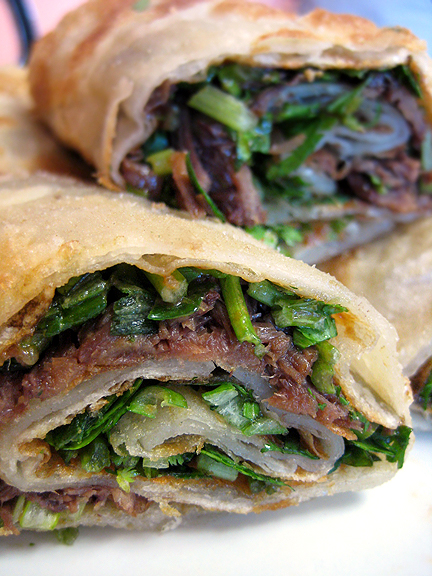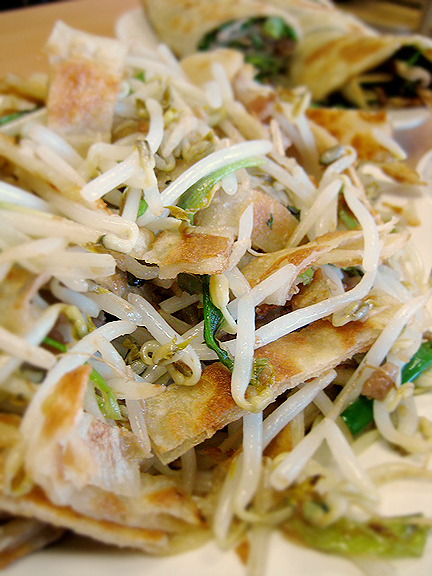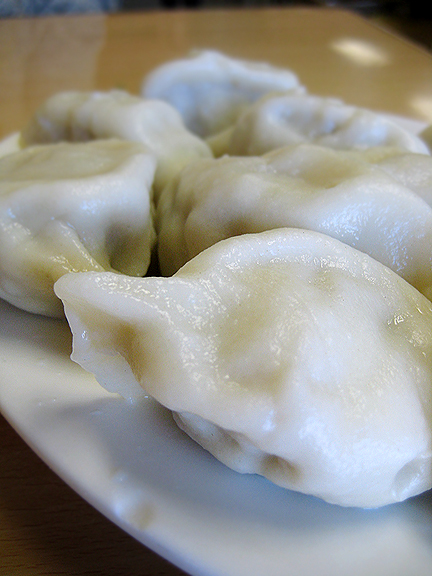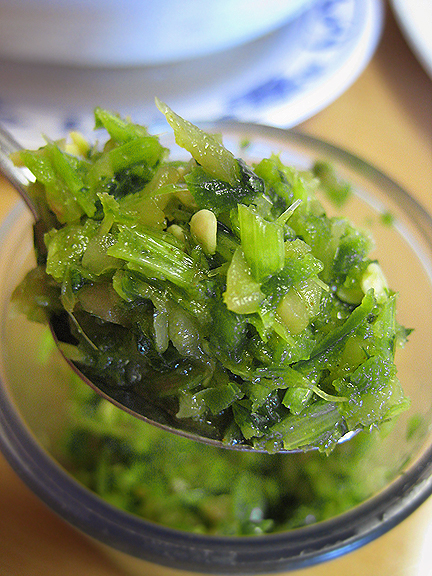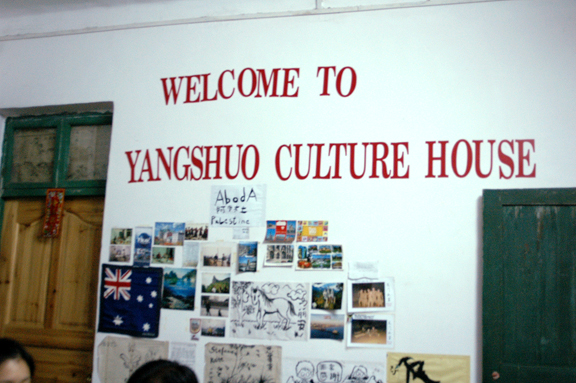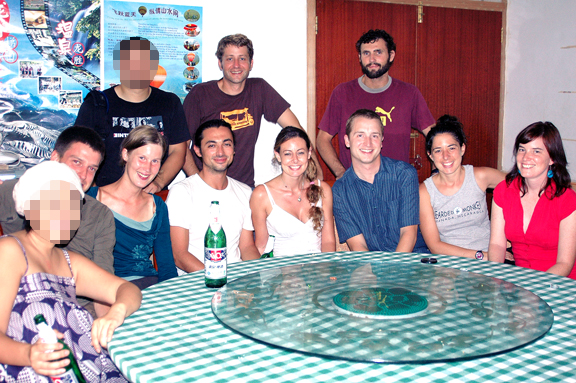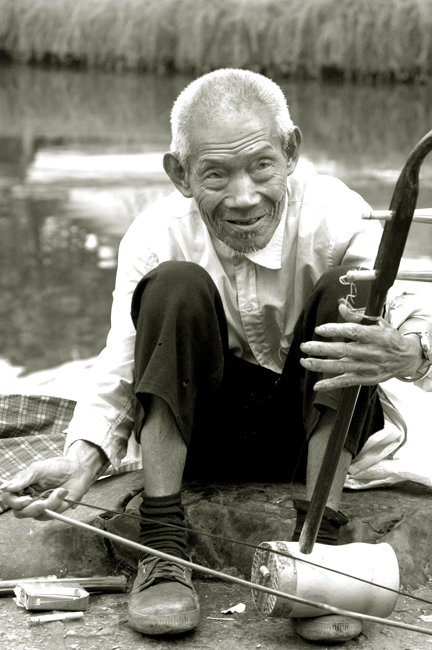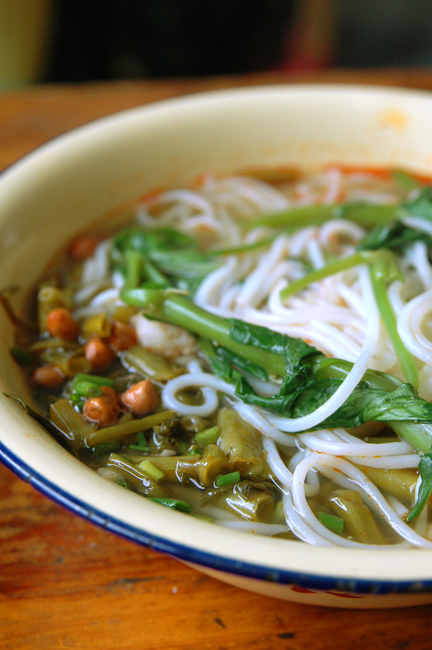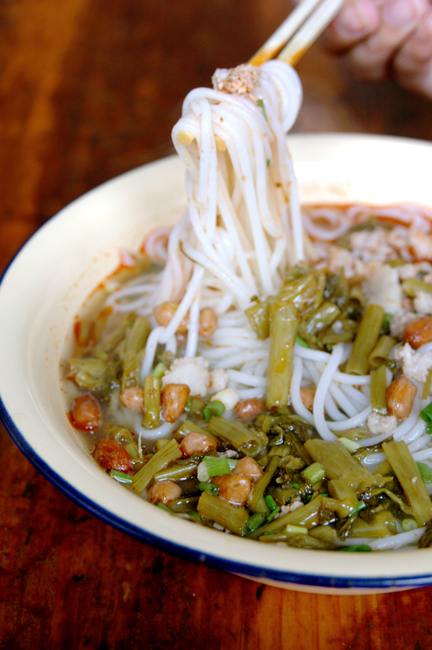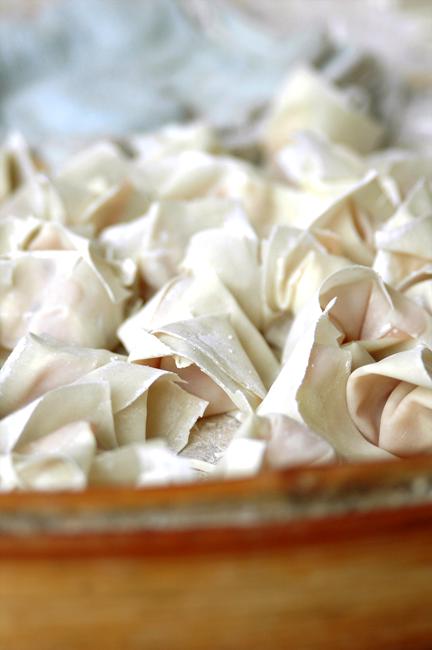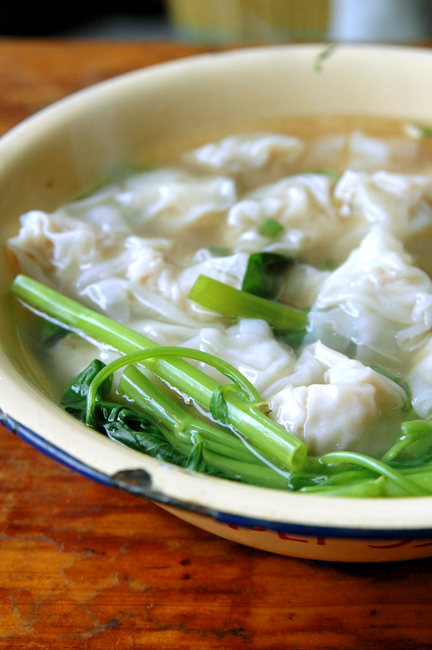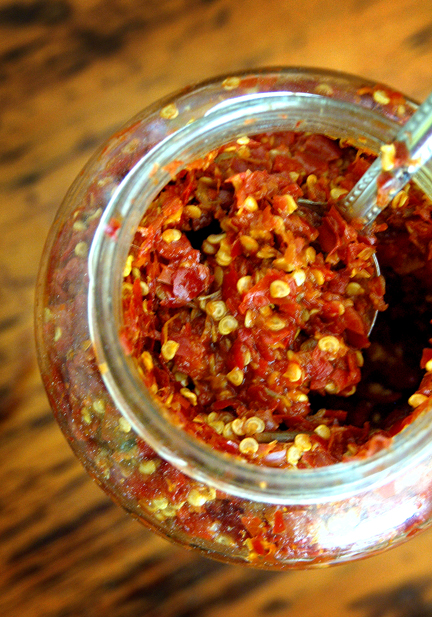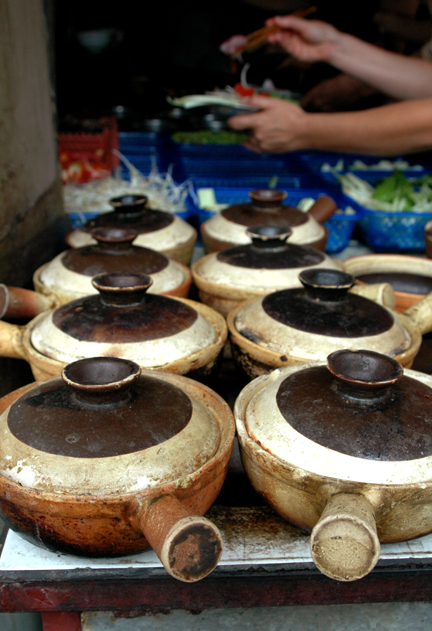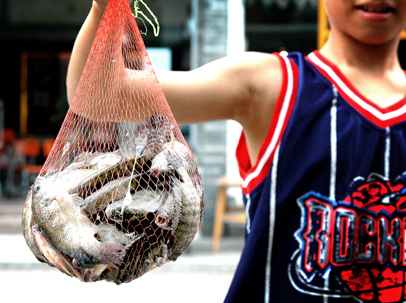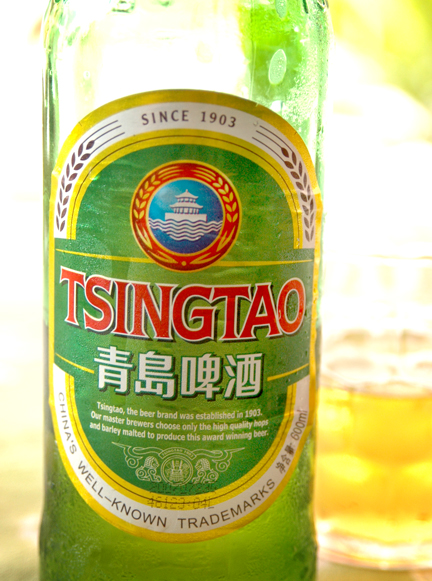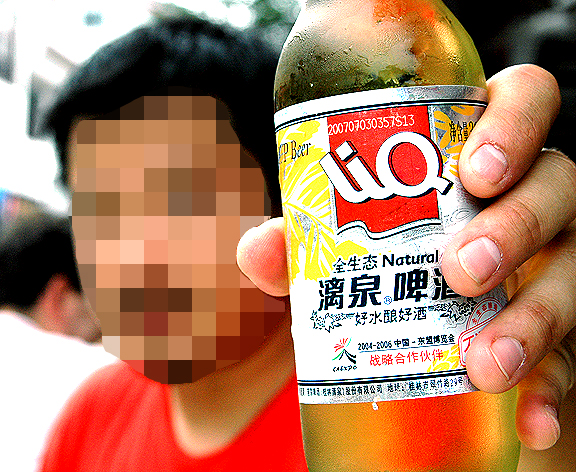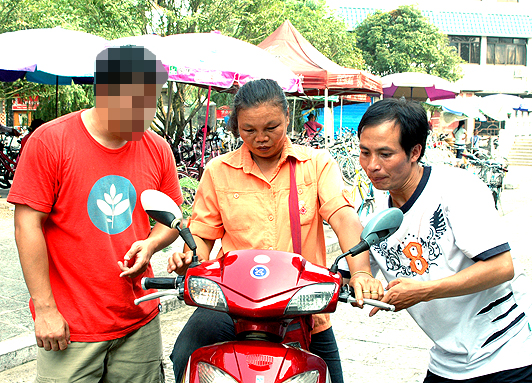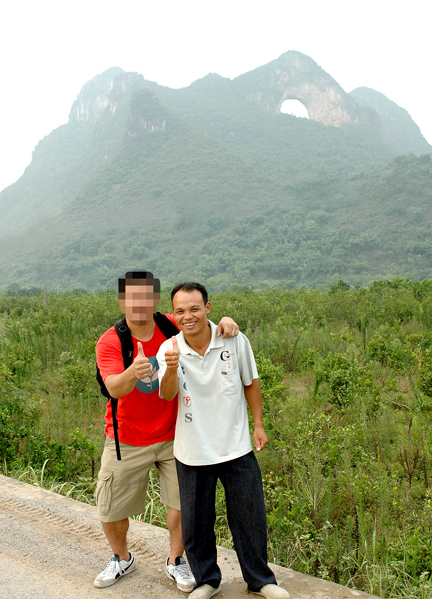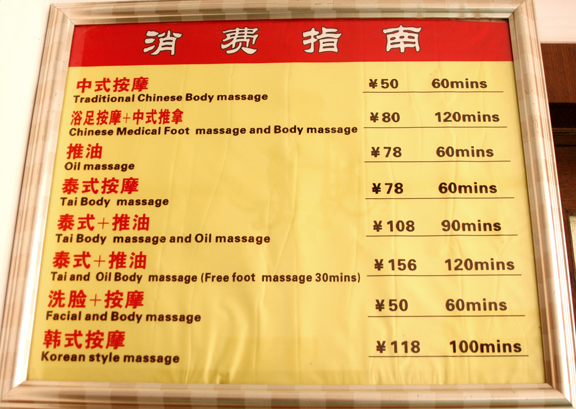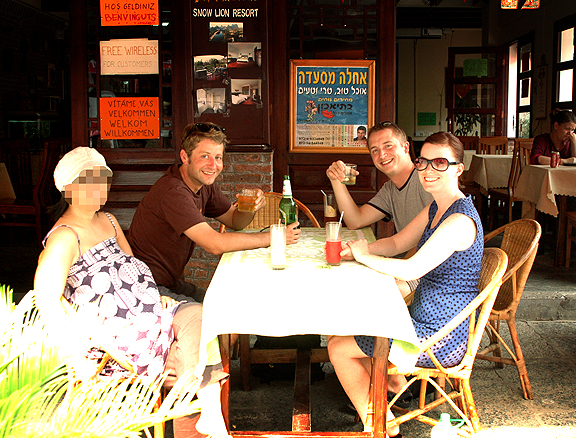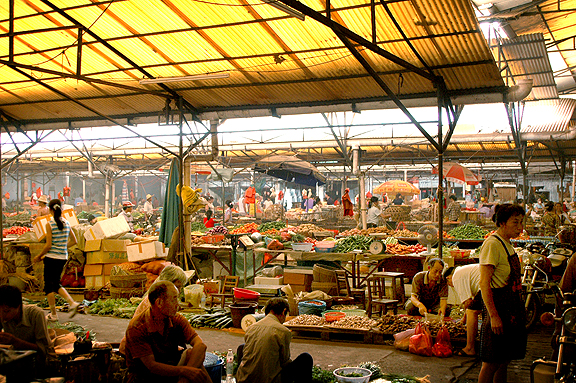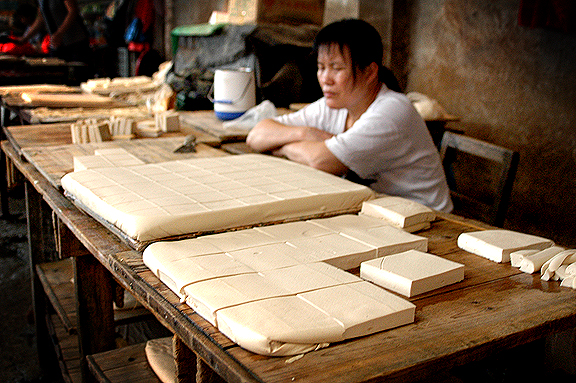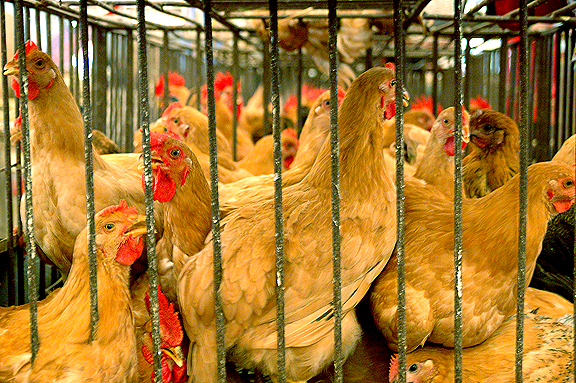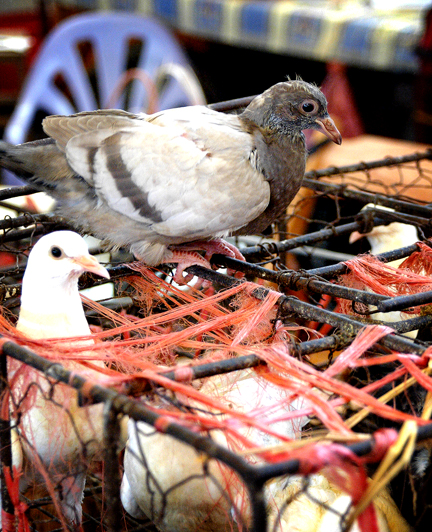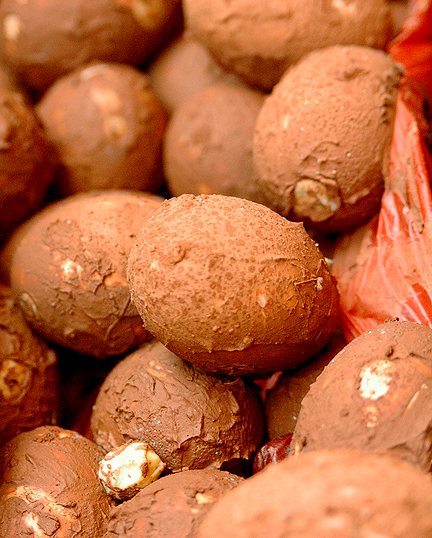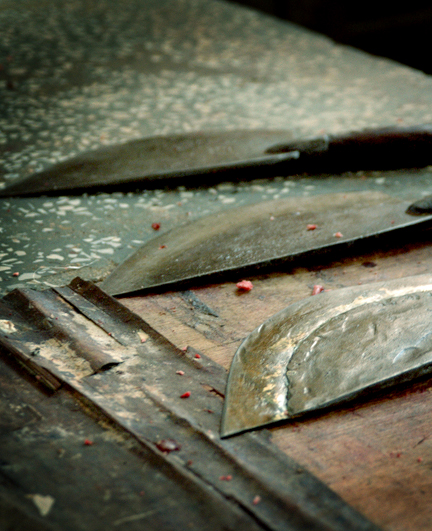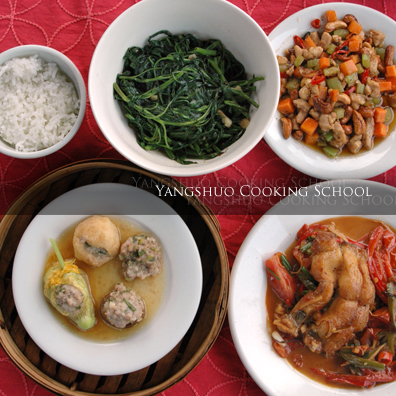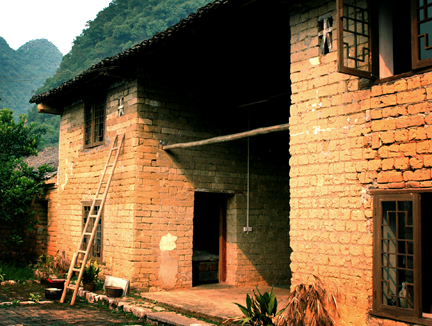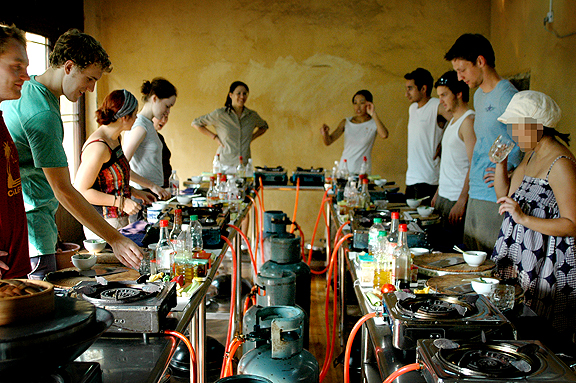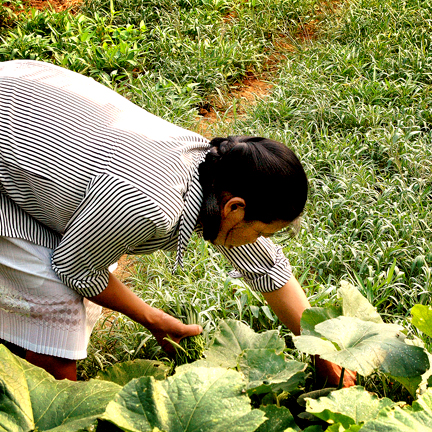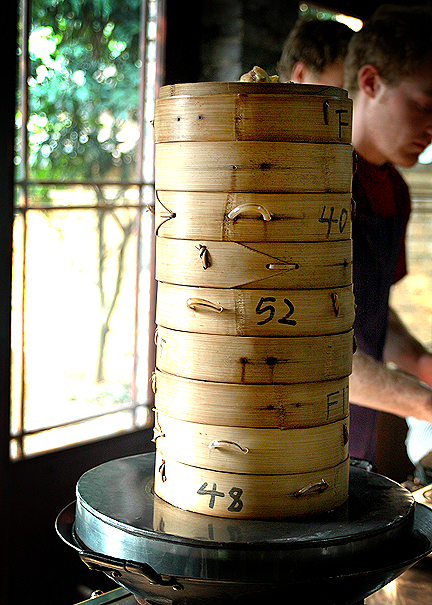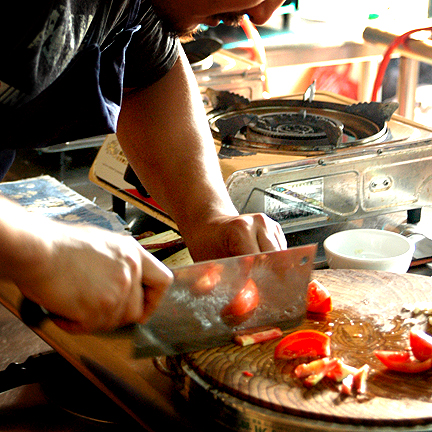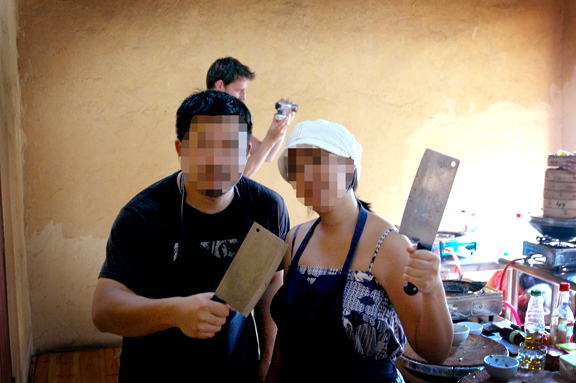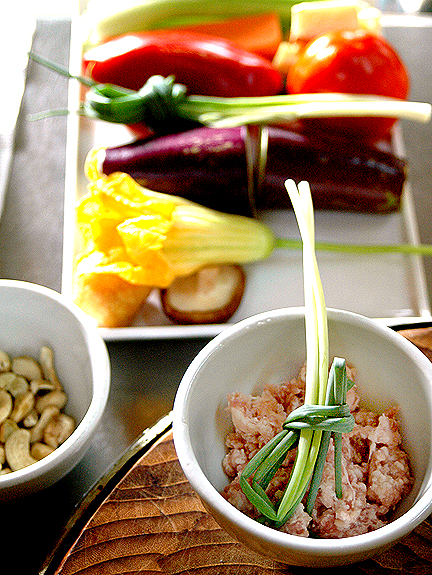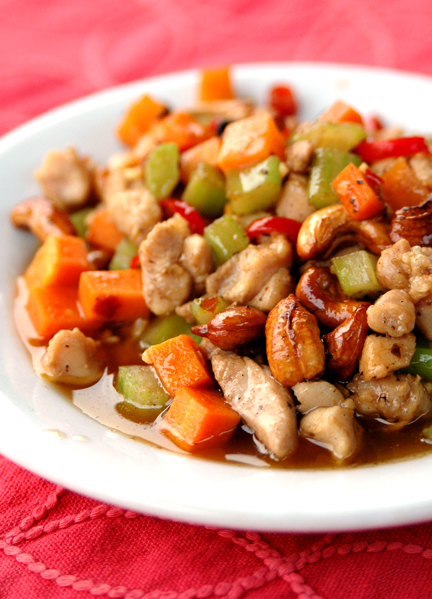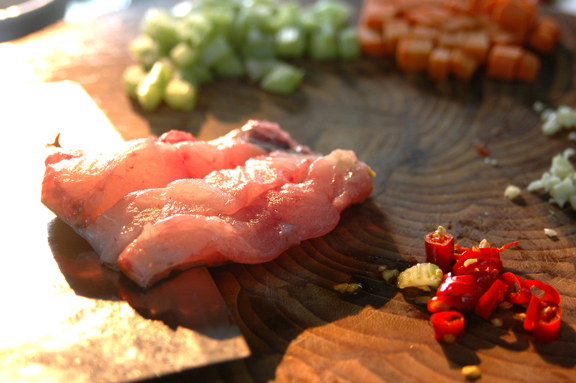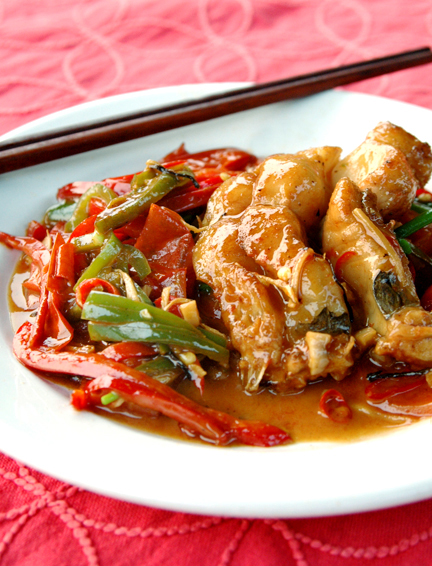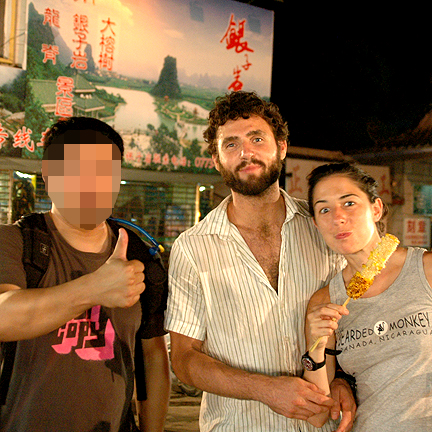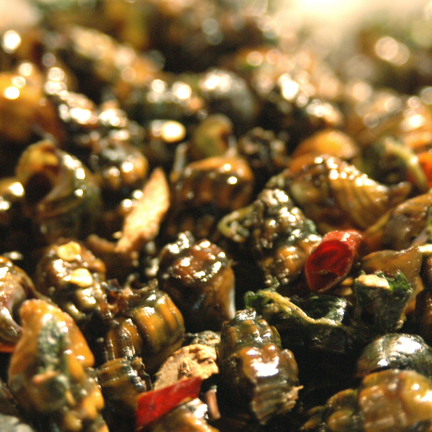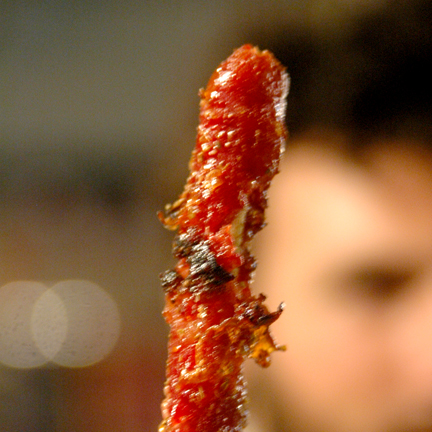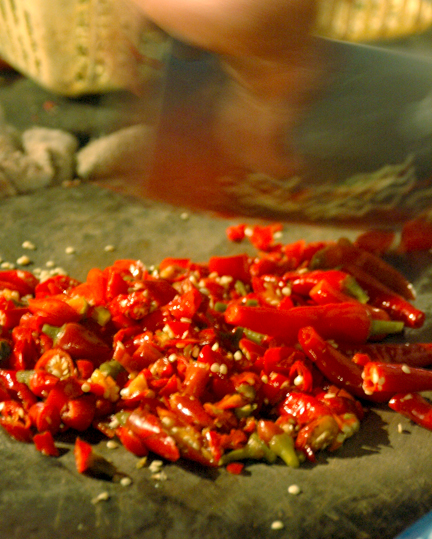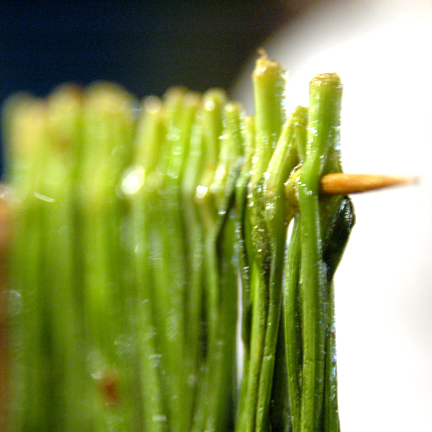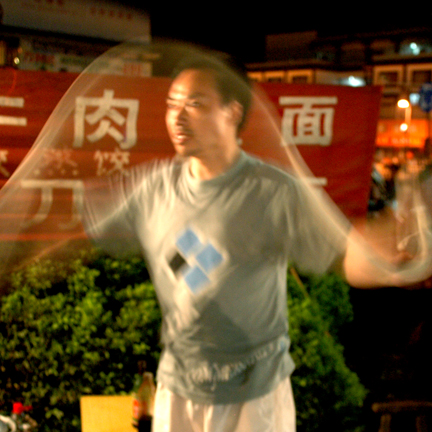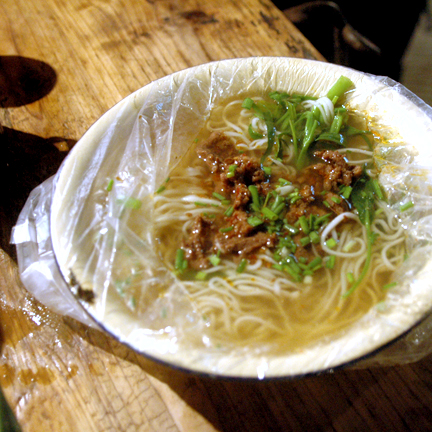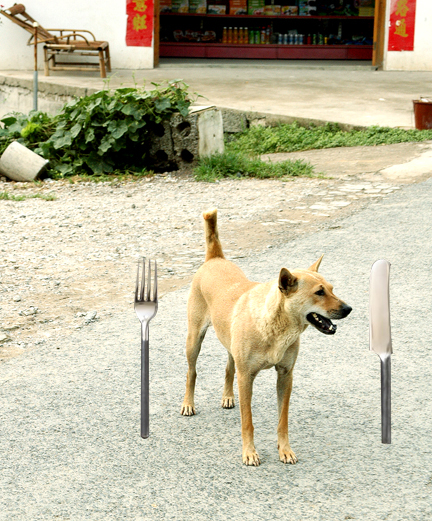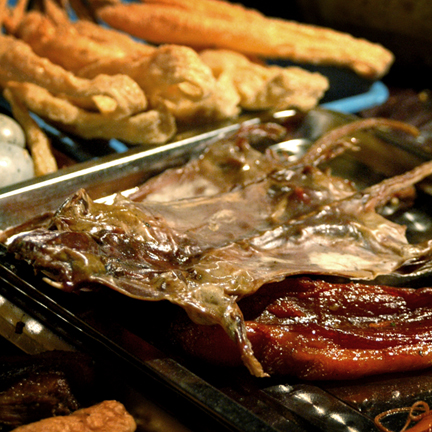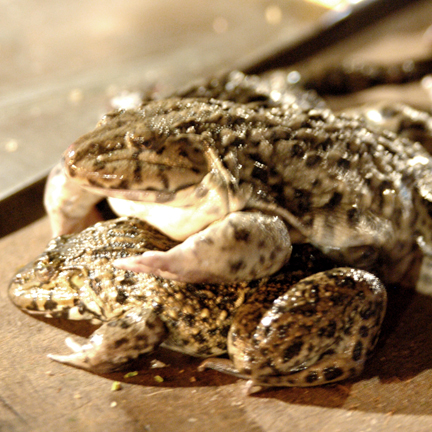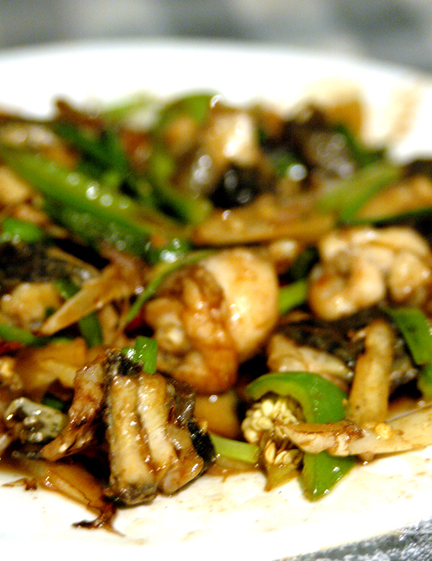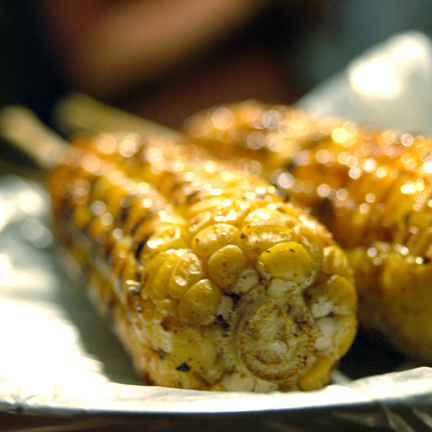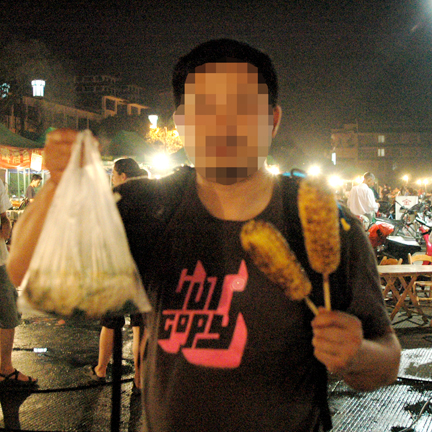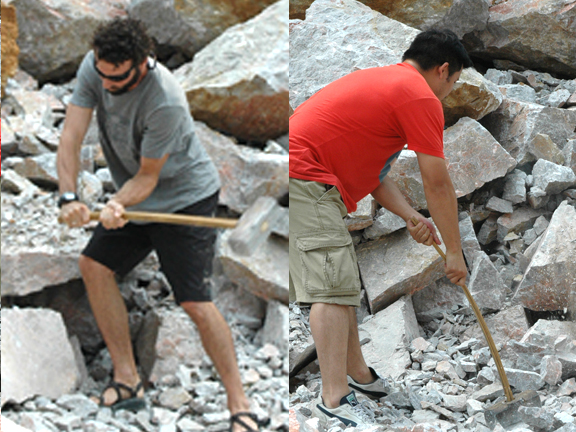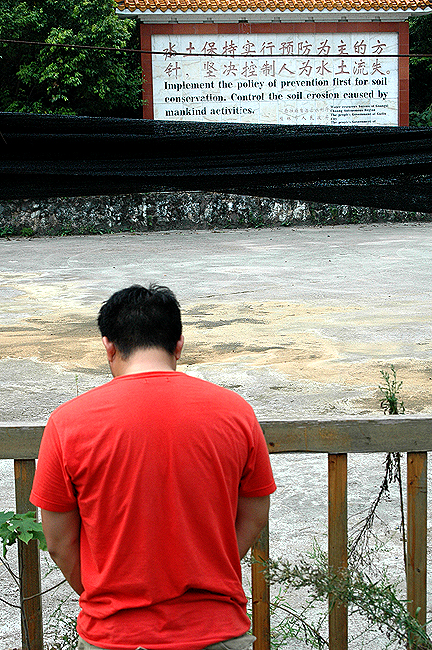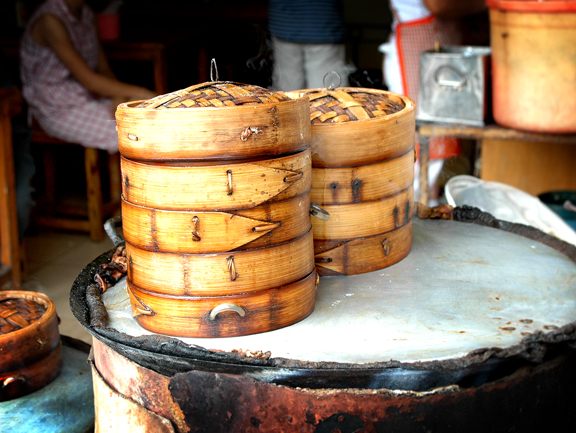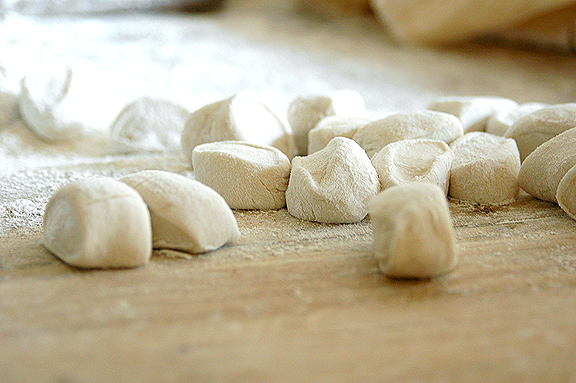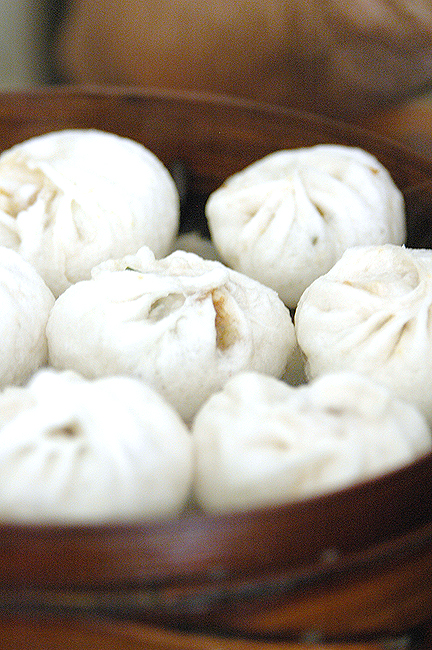The Koreans have quite a number of different dishes that are served on special occasions, seasons and holidays. I read on a Korean tourism site somewhere that bi bim bap is a typical New Year's day dish, same with rice cake soup, tteok. Or when a child is born, colorful rice cakes dusted with various bean powders are served to the family. I remember my good friend Immaeatchu telling me how she had made a beef and seaweed soup in celebration of her mom's birthday. Whatever the case, it seems like everyday is a party for Korean people. And for sure kimchi is that one dish that is celebrated everyday.
But for the not-so-glorious non-Holidays and special occasions that involve too much soju and watered-down Crown Royal, Koreans are also prepared for that department with the many 24-hour joints in Koreatown. A bowl of haejang kook (hangover soup), yu kae jang (spicy beef soup) or shul lung tang, white beef bone broth, always seems to do the trick. Although Korean soups and stews may not be glamorous enough to graze the cover of Food & Wine, they do serve their purpose in satisfying hunger and even providing bodily warmth. I recently found a place that serves Korean hand-torn noodles known as sujebi (soo-jeh-bee) and as I've heard from many of my Korean friends, a perfect dish on a rainy day. This dish may even be perfect for those "just got dumped by my girlfriend who started poking some guy who kept on poking her over Facebook" kind of day.
Sujebi refers to "noodles" that are hand-torn from a ball of dough and boiled in water. The texture is similar to Korean knife-cut noodles known as kal gook soo, but a bit more rough and chewy. In my opinion they are not as chewy as the standard rice ovalettes you see in dishes like dok pok ki and I actually prefer sujebi over those. Due to the hand-tearing technique, you'll never get the same noodle shape which adds a nice homeyness to the food – something I feel best represents Korean food.
I was first introduced to sujebi at the wonderful crab hot pot restaurant known as Ondal 2 (pictured above) – a delightfully ludicrous, four-part dinner that almost always requires a gurney to exit the restaurant. It is Part Three of the dinner and quite fun to watch. For those that have never been to Ondal 2, a waitress unravels a ball of dough out of saran wrap and rips pieces of "noodles" into the boiling crab soup. And they are tasty.
At Soo Rak San Noodle House, their specialties are sujebi and kal gook soo, with at least 5-6 versions of each for you to choose from. When I walked in, it was quite clear that I should stick to the sujebi based on the number of diners eating it as well.
For only $7.99, you are served quite a large portion of sujebi in a typical clay/stone pot, to maintain the hot temperature of the dish. The seafood sujebi came with shrimp, a piece of crab body and legs, clams and mussels. The sujebi broth consists of dried anchovies, seafood and kelp and really has a nice umami taste – more than your typical bowl of kal gook soo. The waitress came with the bowl and I parted the fruits de mer to the side... ah, there you are, my little gems of starch. There were two colored sujebi noodles: white and green. Turns out the green is not made of vegetable (squash noodles) like the ones served at LA 1080 Noodle House on Western. Instead, the chef uses chlorella powder to enrich with vitamins and enhance the color. Chlorella, not to be misread as cholera, is a type of green algae first incorporated into food to curb global hunger during the 1940s. Due to its high protein properties, it was used heavily in Korea during the war, when nutritious food was hard to come by. Don't you love it when you're eating something delicious AND nutritious? Double win.
I devoured the sujebi faster than I ate the seafood. In fact, the seafood was getting in my way. If you can handle the heat, this is one dish you want to eat when its spicy – so good. Compared to the other sujebi places I've eaten at – Ondal 2 and Olympic Noodle, this definitely holds up. But they are all pretty equal in my opinion. I don't think that Ondal 2 serves them separate from the crab hot pot. I have to go back and check out the kal gook soo soup noodles to make a better assessment. For now, both Soo Rak San and Olympic Noodle will do you just fine if you are interested in trying sujebi.
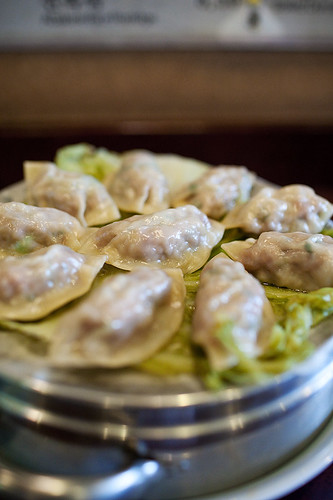
I also ordered a basket of their steamed dumplings and they were definitely tasty. I think I still prefer the dumplings over at Olympic Noodle and Myung Dong Kyoja over these. My only problem with these steamed dumplings is that they got dried out like a Hollywood celebrity's botoxed face. So you have to eat these quite fast. Flavor is there though.
Thanks for reading.
Soo Rak San Noodle House
4003 Wilshire Blvd. #1
Los Angeles, CA 90010
(213) 389-2818
Everyday 10 am - 10 pm
Thanks for reading.
Soo Rak San Noodle House
4003 Wilshire Blvd. #1
Los Angeles, CA 90010
(213) 389-2818
Everyday 10 am - 10 pm
